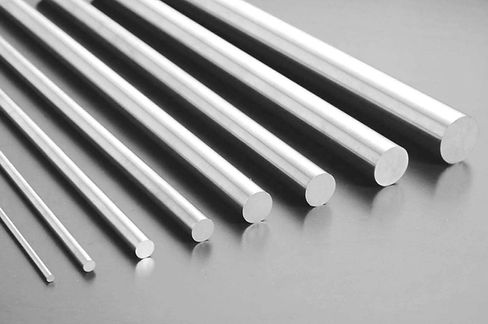Tungsten
Tungsten, which means "heavy stone" in Swedish, is a very hard and heavy silver-gray rare metal. Tungsten, which has the highest melting point among metals, is used for heaters and reflectors in furnaces exceeding 2000℃ because of its relatively large electrical resistance as a metal.
When mixed with carbon, it becomes a light alloy. Advanced cutting tools use cement carbide combined with cobalt.
In addition, tungsten, which has a very low environmental impact, has a very high radiation shielding ability compared to lead.
Tungsten does not look familiar in our daily life, but it is closely related to our lives for industrial and medical uses.

About tungsten
Tungsten, which means "heavy stone" in Swedish, is a very hard and heavy silver-gray rare metal. Tungsten has the highest melting point among metals and is used for heaters and reflectors in blast furnaces exceeding 2000℃ because of its relatively large electrical resistance as a metal.
When mixed with carbon, etc., it becomes a light alloy. Sechemed carbide combined with cobalt is used in advanced cutting tools.
In addition, tungsten, which has a very low environmental impact, has a very high radiation shielding ability compared to lead, and is widely used as a radiation shielding material in medical fields such as X-ray CT.
Tungsten does not seem familiar to us in our daily life, but for its industrial and medical uses, it is closely related to our lives.
High melting point
Tungsten has the highest melting point among metals, so it has a low coefficient of thermal expansion and very high shape stability even in ultra-high temperature environments.
Large electric resistance
We provide various tungsten rods for discharge electrodes with improved discharge characteristics and discharge consumption resistance due to their relatively large electrical resistance.
High hardness
Although tungsten is a metal with high hardness, it is used in advanced cutting tools by combining with carbon to increase hardness.
Chemical properties
Tungsten is stable at room temperature but oxidizes to the point where it loses its surface luster. At high temperature, it reacts mainly with Oα, COα, Nα, HoO, hydrocarbons, etc., but not with mercury vapor and hydrogen.
When it reacts with oxygen or air, as the temperature rises, it produces rising oxides (WO)) through low oxides such as WoO, WoO, and W₀O₈.
Water doesn't corrode it, but steam in its red heat corrodes it to form WOα.
It reacts strongly and dissolves in a mixed solution of nitric and hydrofluoric acid.
It has reducing properties under extremely hot temperatures. When heated with sulfur at very high temperatures, compounds (WS);) are produced, and when an authenticator is applied, compounds (WwP)) are formed.
